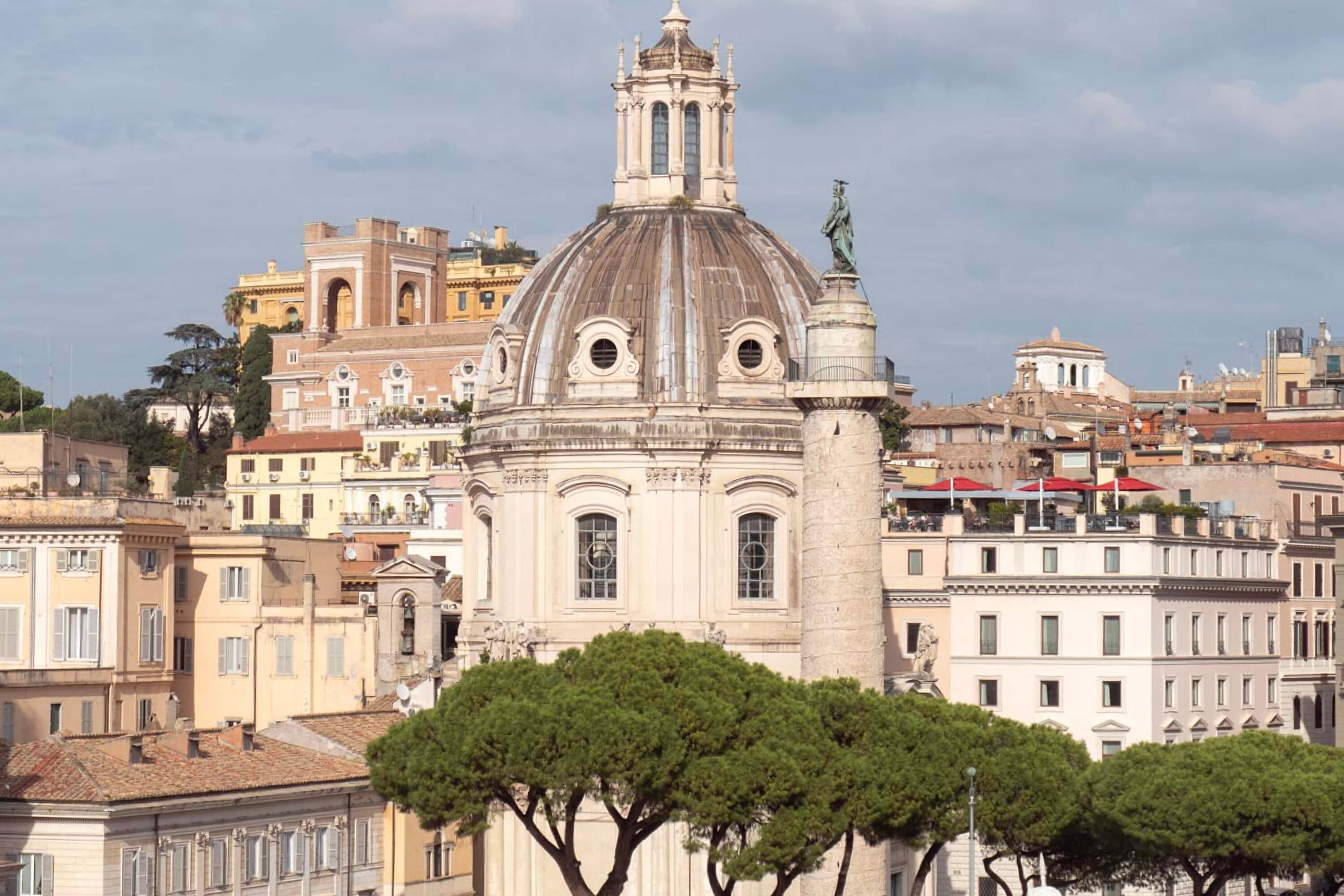Rome. Part Two. Field of Mars
The center of Rome is the Roman Forum and the adjacent Colosseum. But these places are so unlike the rest of Rome that they are perceived as a separate city. That’s why one would like to find some second, more usual center around which there would be streets, people, and cozy cafes.
This second center exists in Rome, and it is the Pantheon — a huge ancient temple built in 128.
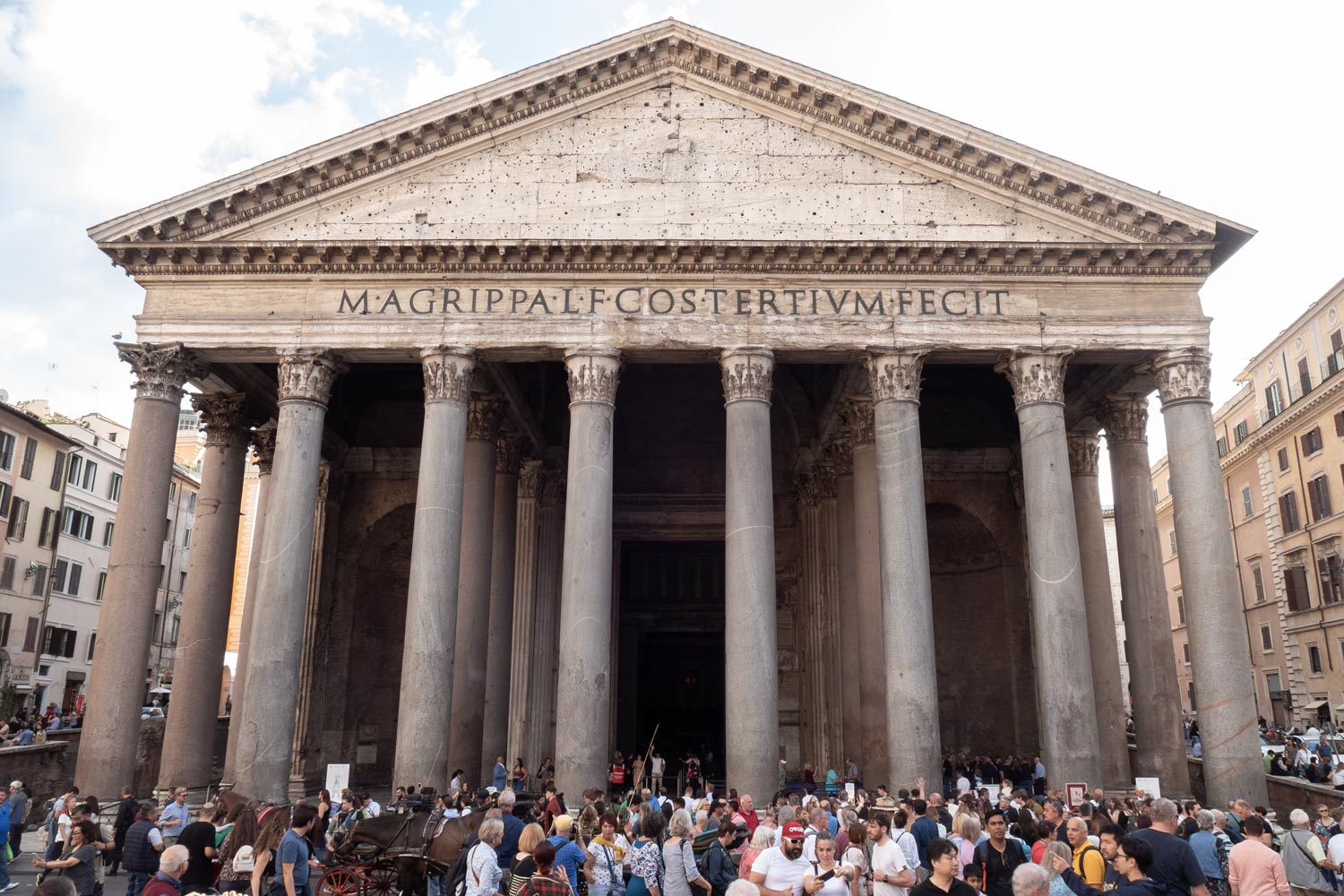
There’s a belief that the name “Pantheon” means “temple of all gods.”
This is an very dubious version, as temples were usually not built in honor of multiple gods, but each temple was dedicated to one, concrete god. The idea was purely practical: if something happened to the temple, for example, it was struck by lightning — people needed to know which god exactly they had angered so that they could offer a sacrifice to personally him.
Therefore, the Pantheon could not be a temple of all gods. This is too literal a translation from Greek. Most likely, the name of the temple meant something similar but more abstract in meaning. For example, “a completely divine place.”
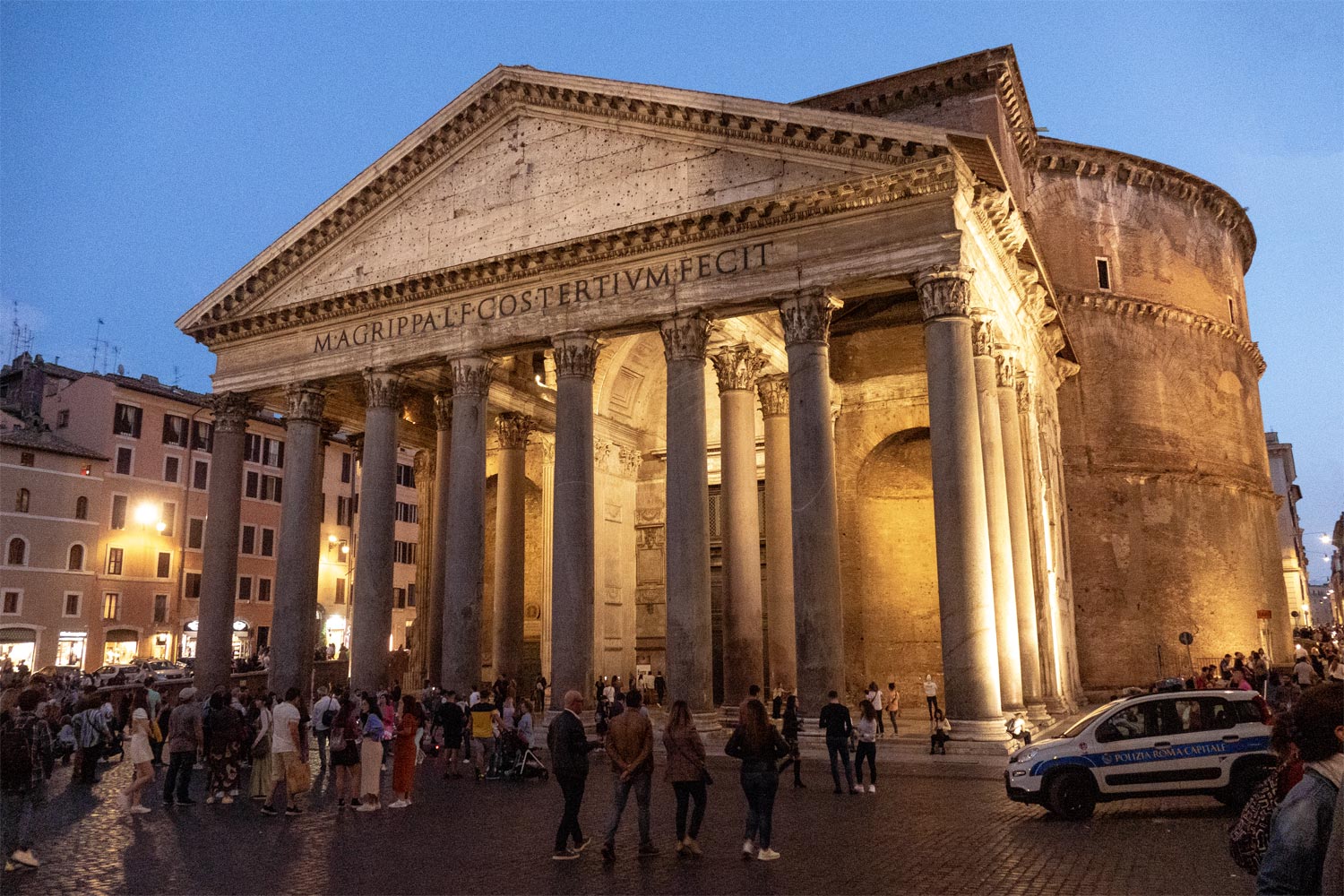
It seems that the Pantheon has written which god it’s dedicated to. In reality, the mysterious inscription translates roughly: “Me built by Marc Agrippa.”
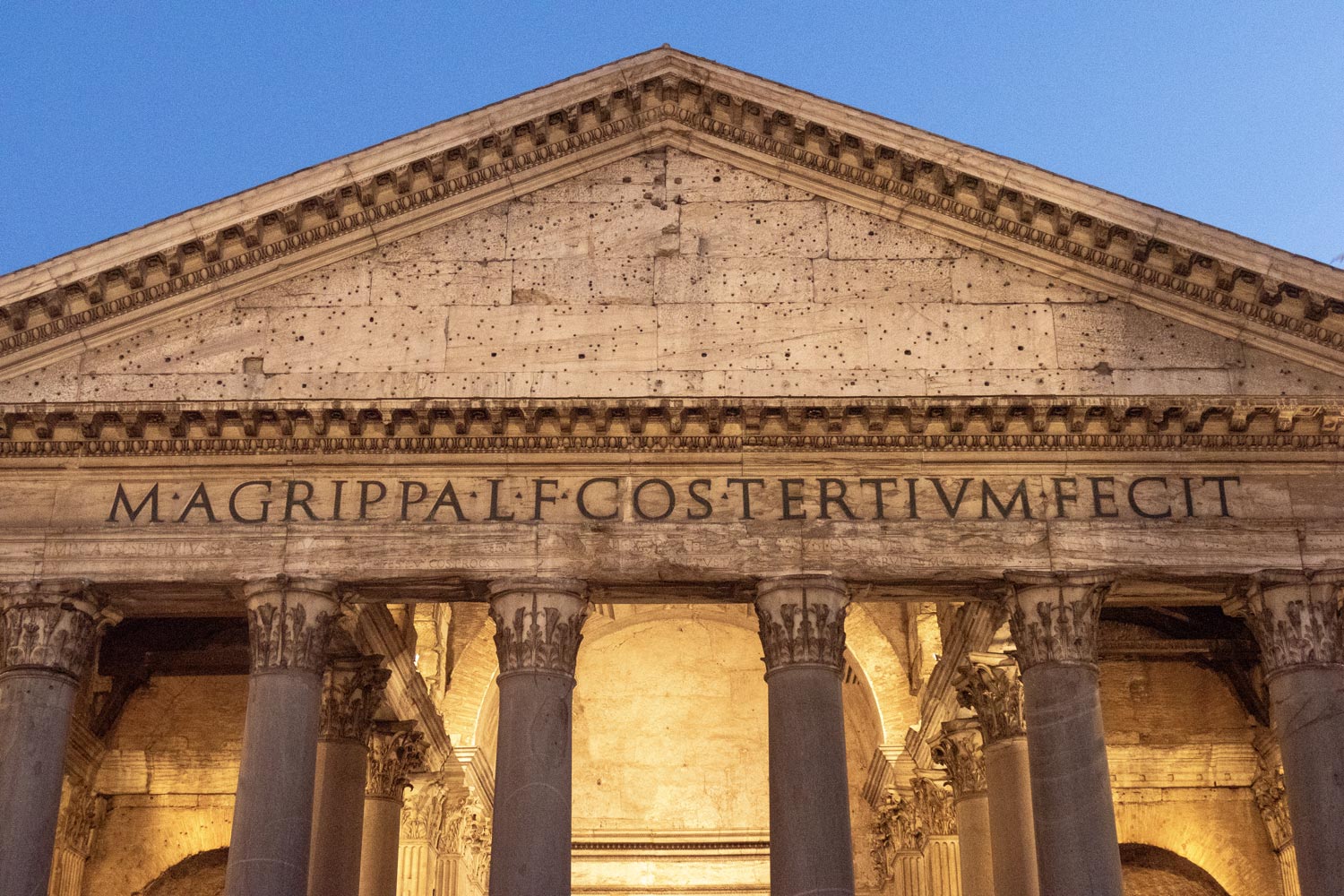
In ancient times, Rome was pagan, so the Pantheon was certainly built as a pagan temple. Later, Rome became Christian, and the Pantheon was adapted for a Christian church. Then it finally became clear which god to pray to, if lightning strikes.
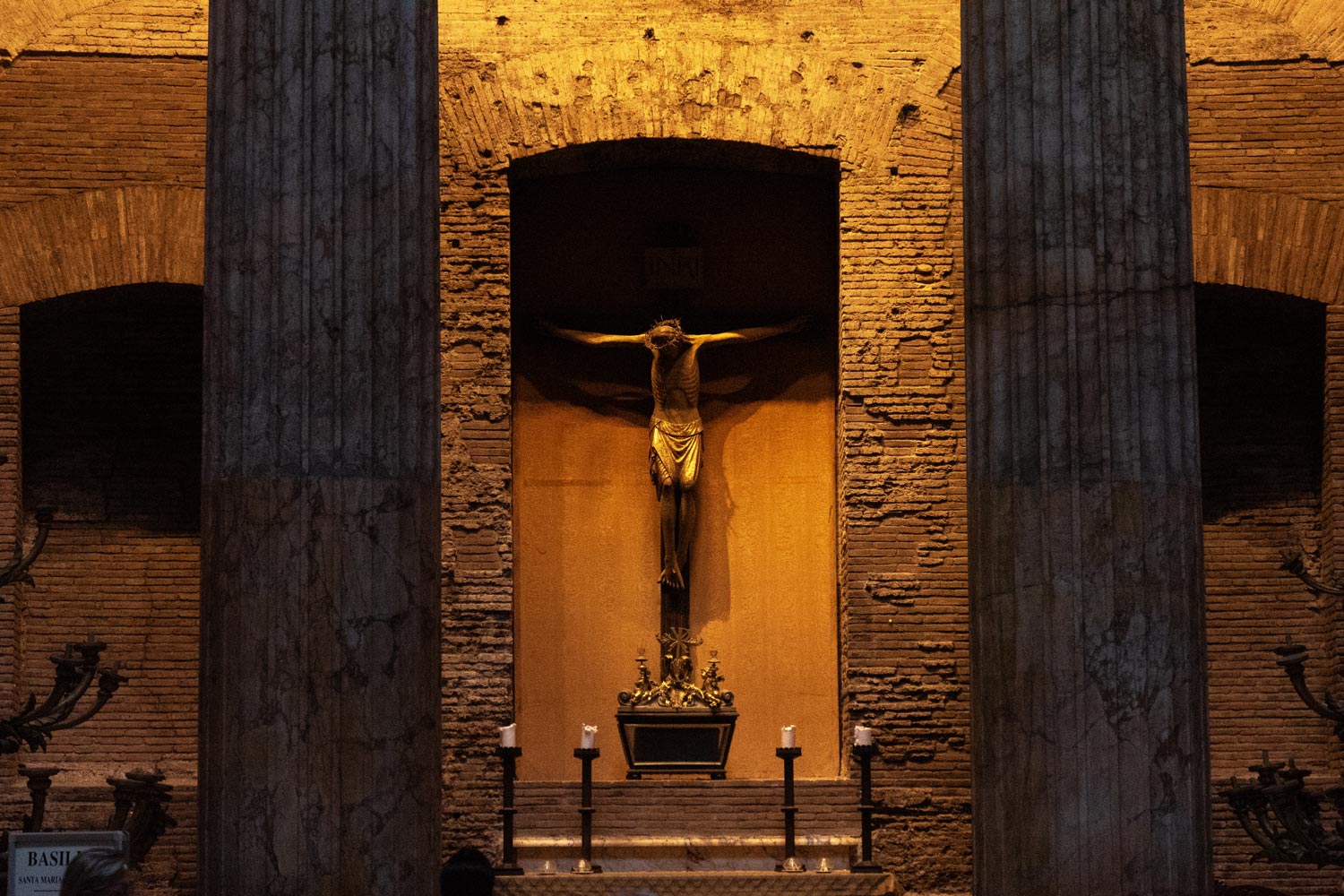
When the Pantheon was being built, light bulbs had not been invented yet, and candles provided too weak a light to illuminate the huge temple. There were also ventilation problems: crowds of people gathered in the temple needed something to breathe.
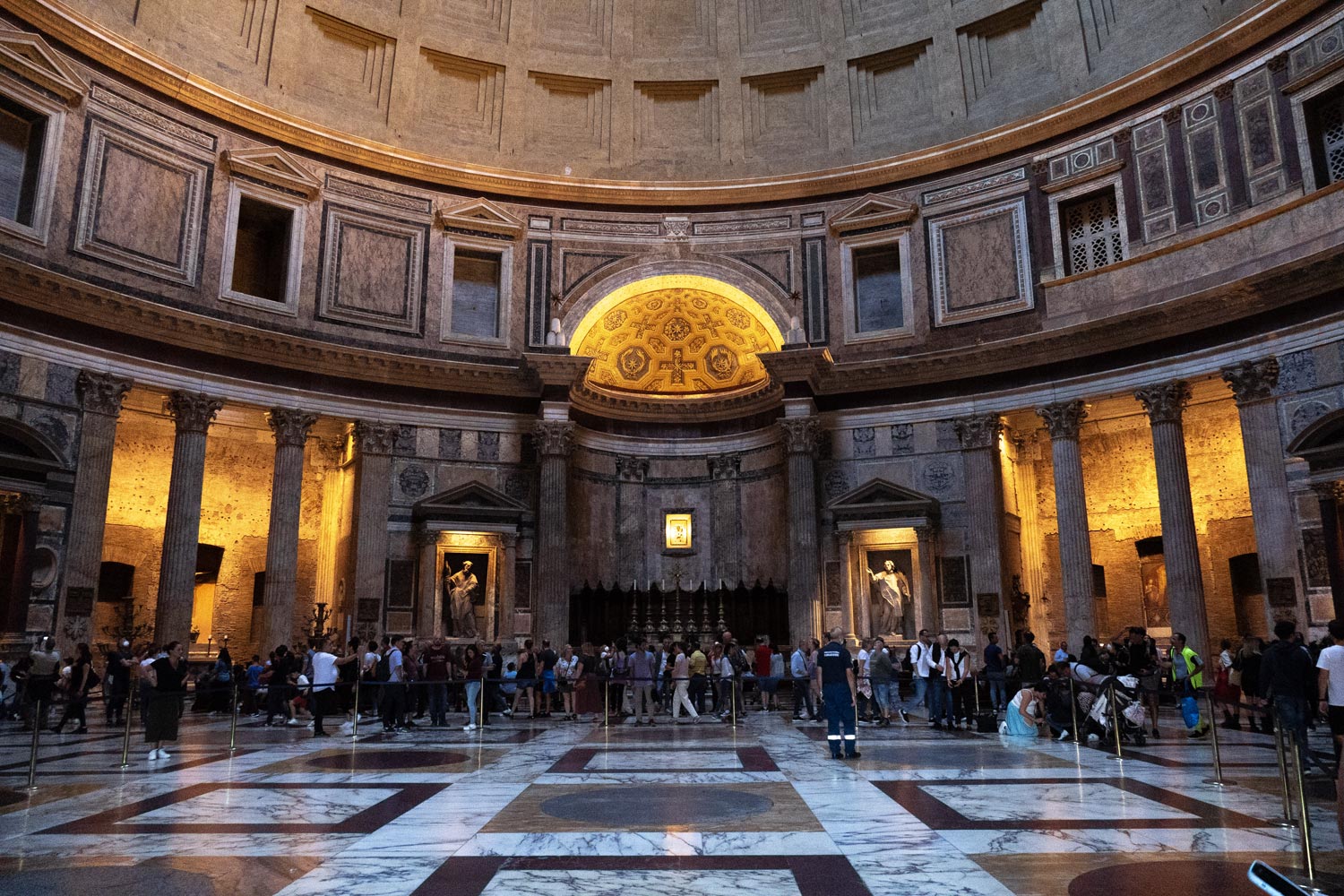
Thus, the Romans made a hole in the Pantheon’s dome. In addition to bringing in fresh air, sunlight enters through this hole during the day, illuminating the temple each time differently and creating the effect of “divine light.”
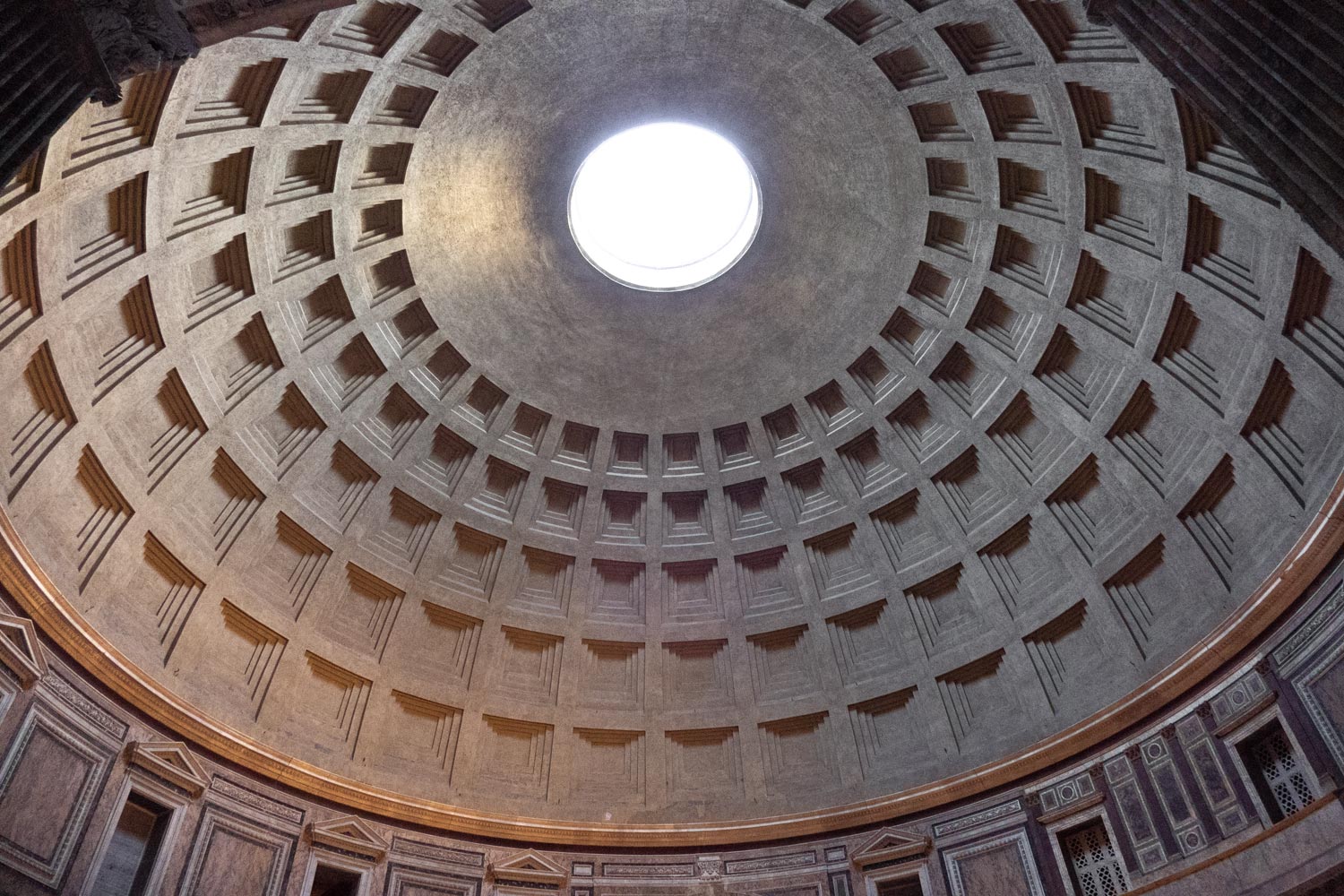
Of course, through this hole, the Pantheon would regularly be flooded by rains, so the temple has a powerful Roman drainage system. And here is how the Pantheon looks from above:

Once, the Pantheon was the center of the Field of Mars — a large and unoccupied area on the banks of the Tiber River, away from the Roman Forum.
Mars was the god of war, and the field got its name because military training used to take place there. As Rome gradually developed, the military started training in other locations. Then the Field of Mars became filled with theaters, baths, temples, residential houses — and ceased to be a field.
Nowadays, ordinary residential buildings, hotels, and restaurants surround the Pantheon.
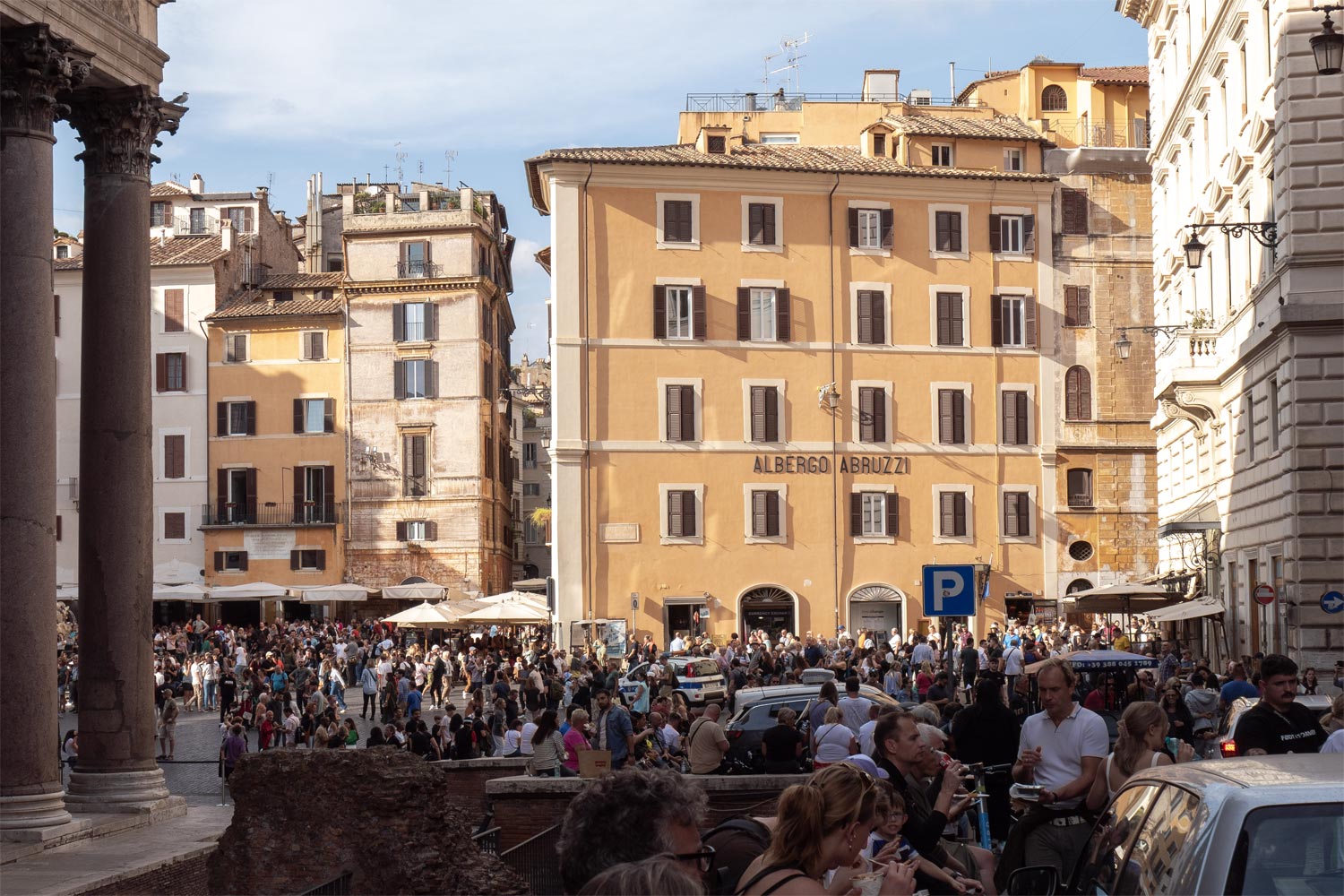
The architecture in Rome is of course truly mind-blowing.

Anyone living in the center of Rome has round-the-clock free access to masterpieces of world culture.

Right below the windows are the best Italian restaurants and cafes serving divine desserts.

Warm colors, play of light, and architectural masterpieces that a person living in Rome sees every day instill in them a sense of beauty from childhood.

A person who grew up amidst this La grande bellezza (The great beauty) will never paint a curb in yellow-green, install an air conditioner on the facade, or wear flip-flops with socks.
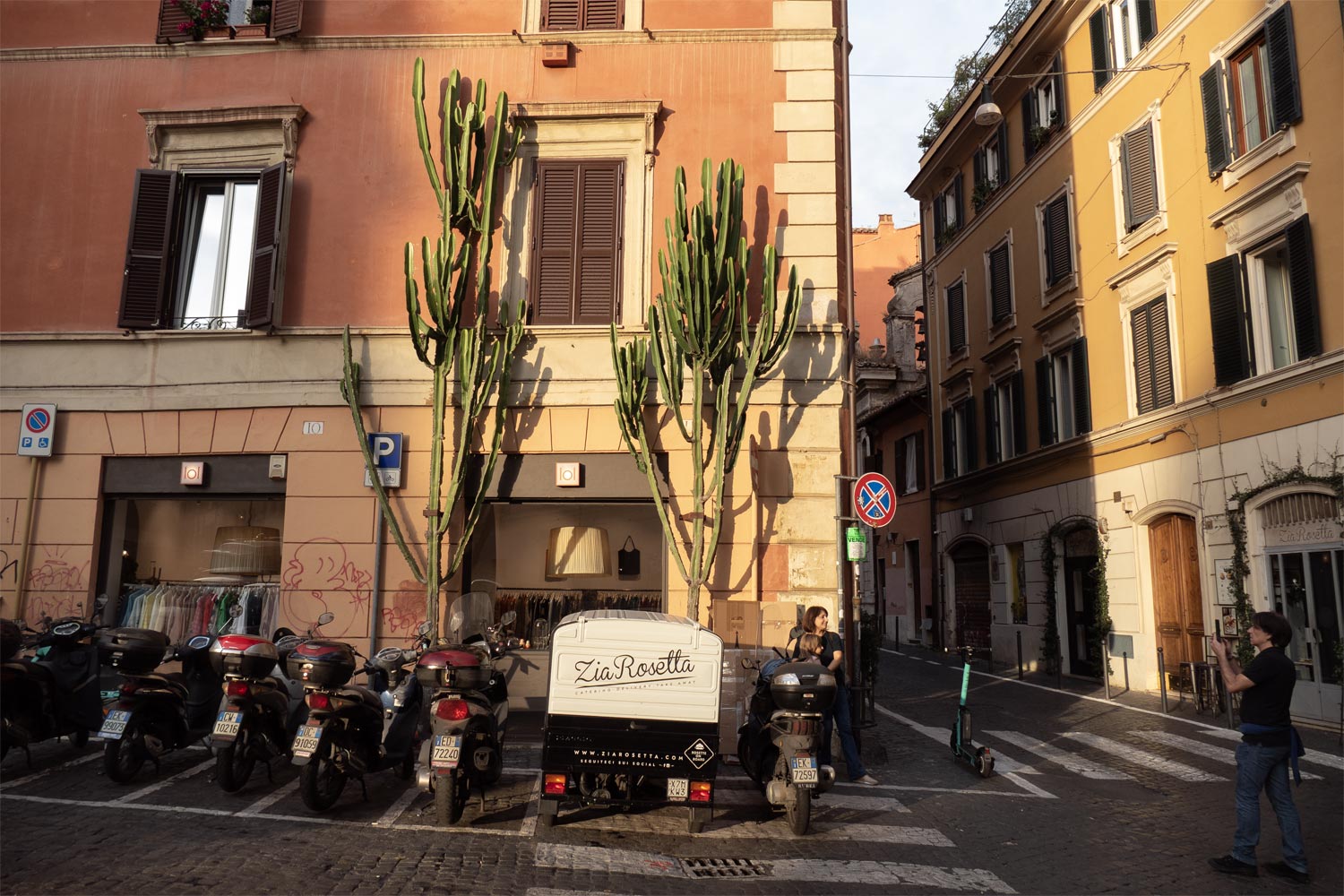
What is the cost of living in Rome? It’s high, and it’s not about the apartment’s price. The issue is that there are too many people in Rome. No, not like that. Too. Many. People!!!
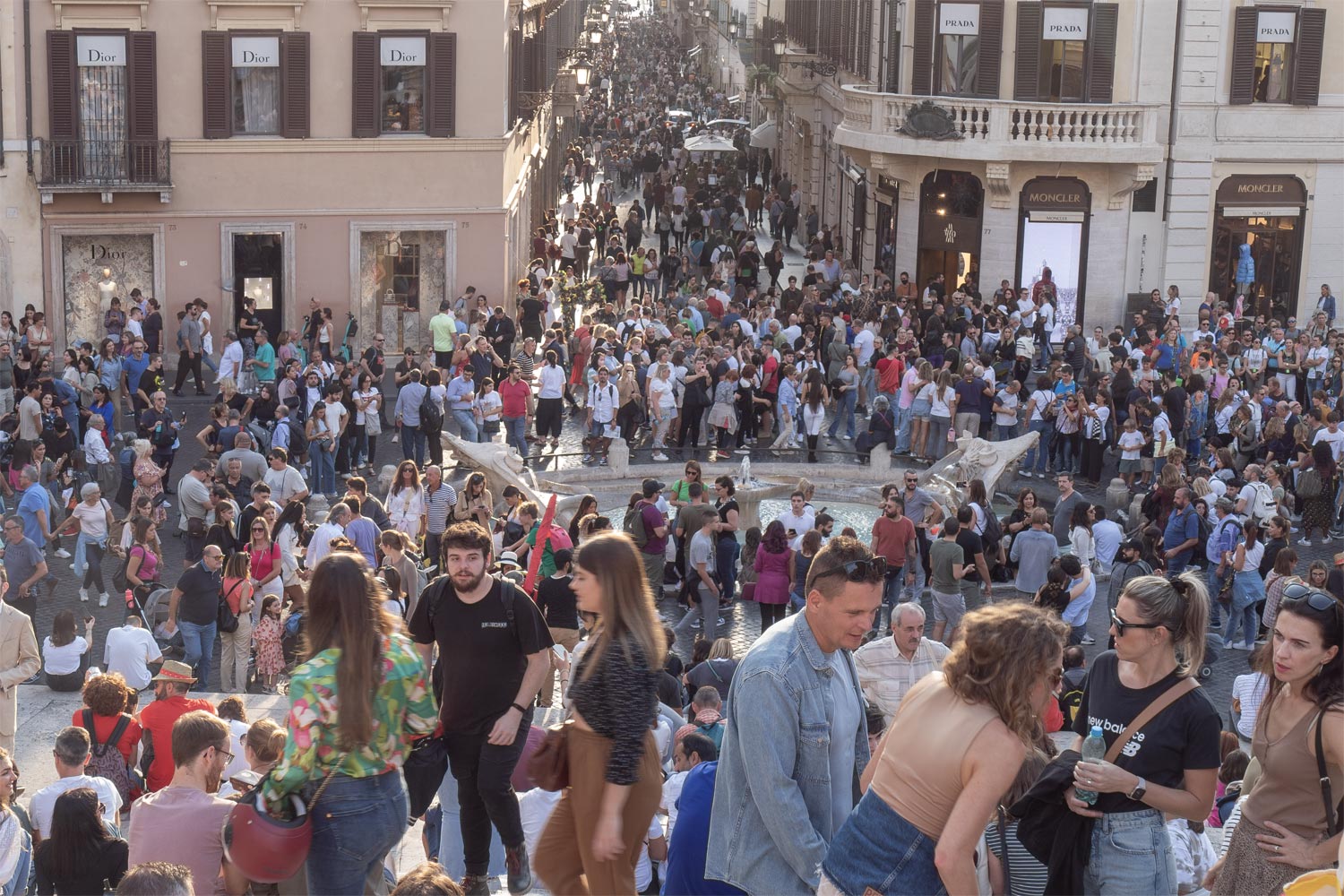
The largest crowds of tourists gather at the Spanish Steps. From a distance, the stairs looks enticing.
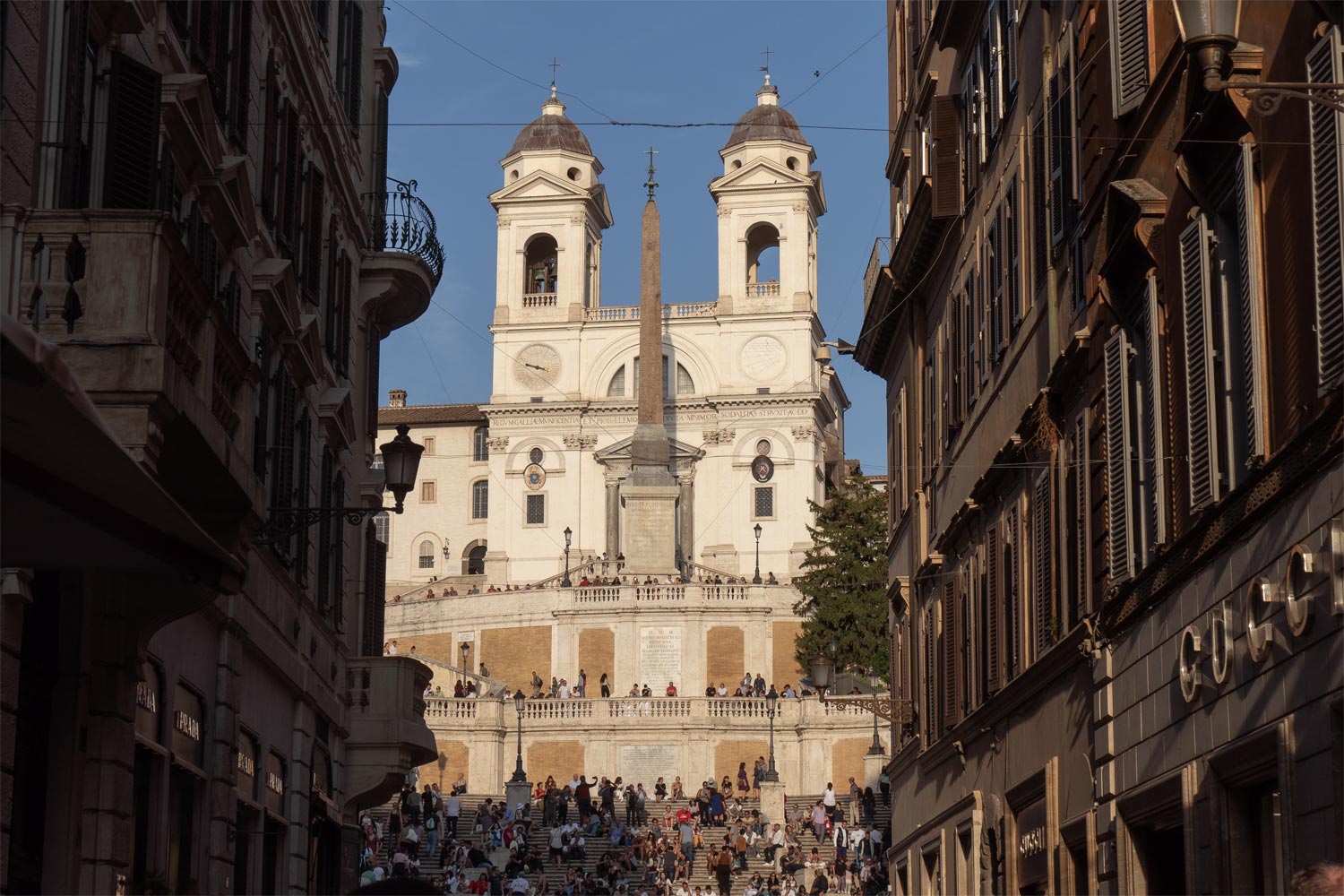
But up close, it turns out there is no space to move.

From the stairs, streets branch out in all directions, through which flow the crowds of people. There’s no rest here, neither day nor night.
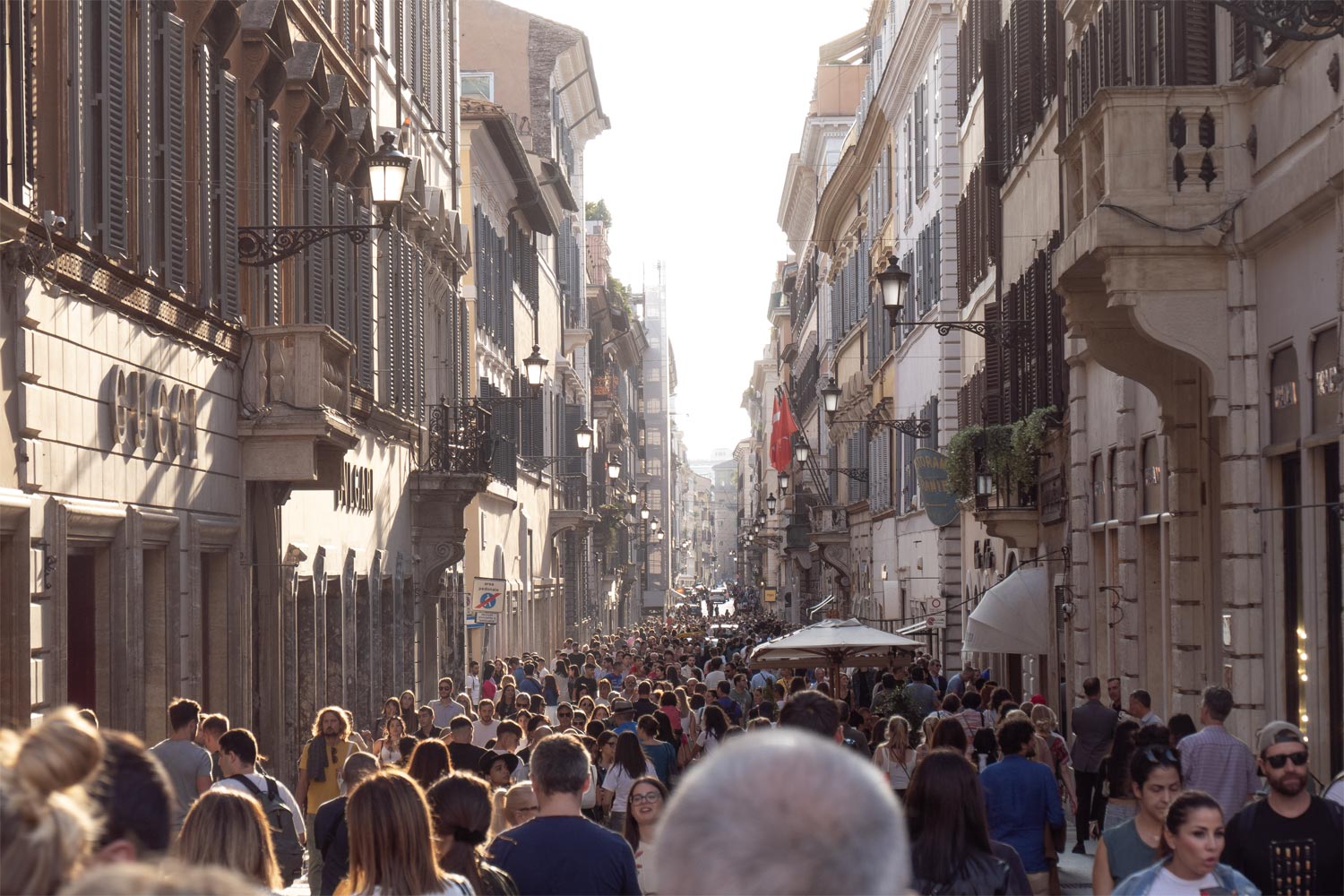
Flowing through the entire Field of Mars, crowds converge towards a large column, protruding like a beacon of salvation amidst the rooftops.
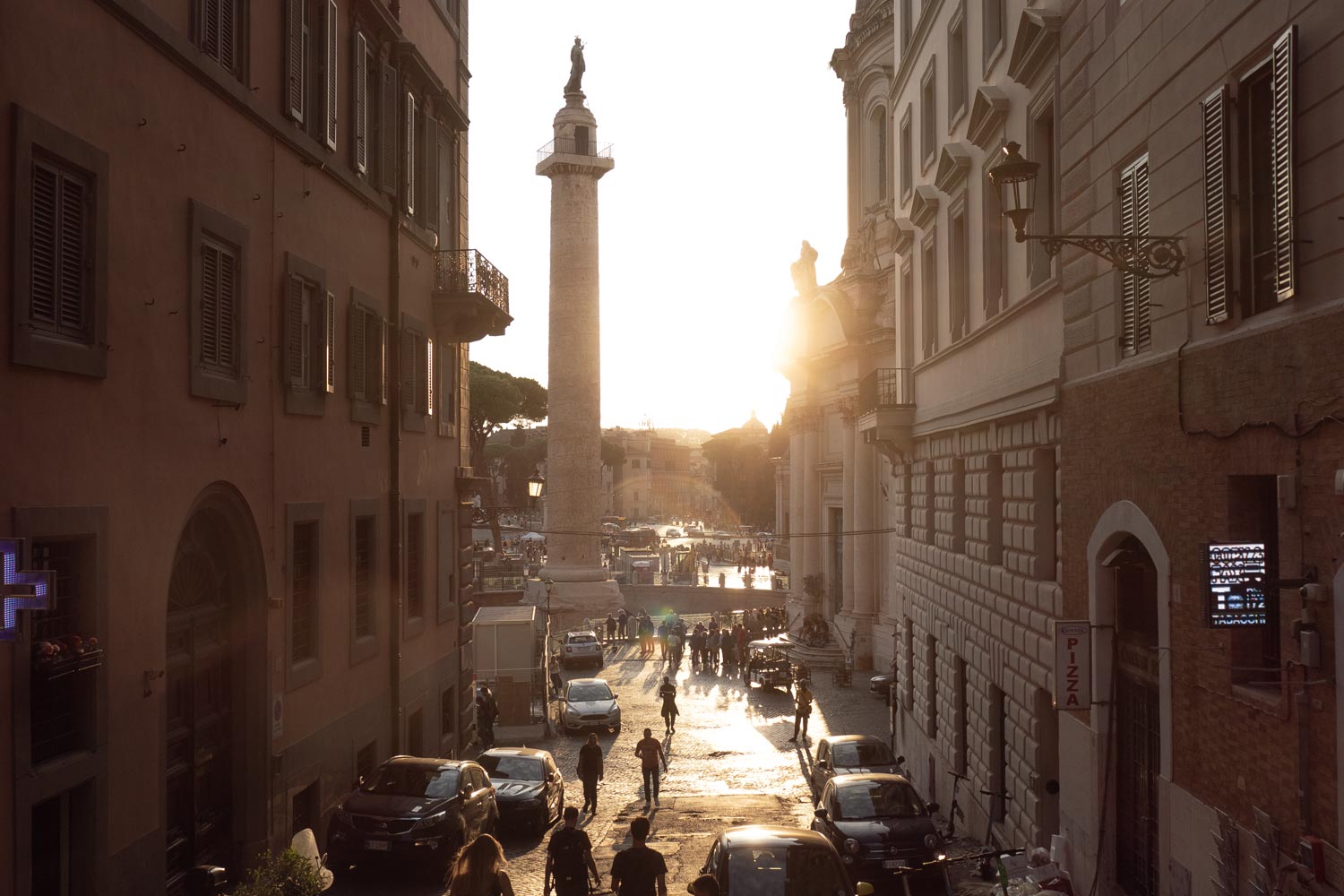
At least near the column one can catch his breath: a large square is here, and the crowd disperses. Phew.
Column of Trajan
It is erected in honor of the Emperor Trajan, who conquered the Dacians — a people living in modern-day Romania. Just so you know, this emperor has no relation to the city of Troy and its famous horse.

On the column is depicted a real ancient Roman comic, in which 155 battle scenes and 2662 people. Trajan himself appears in the comic a whopping 58 times — just like a superhero.
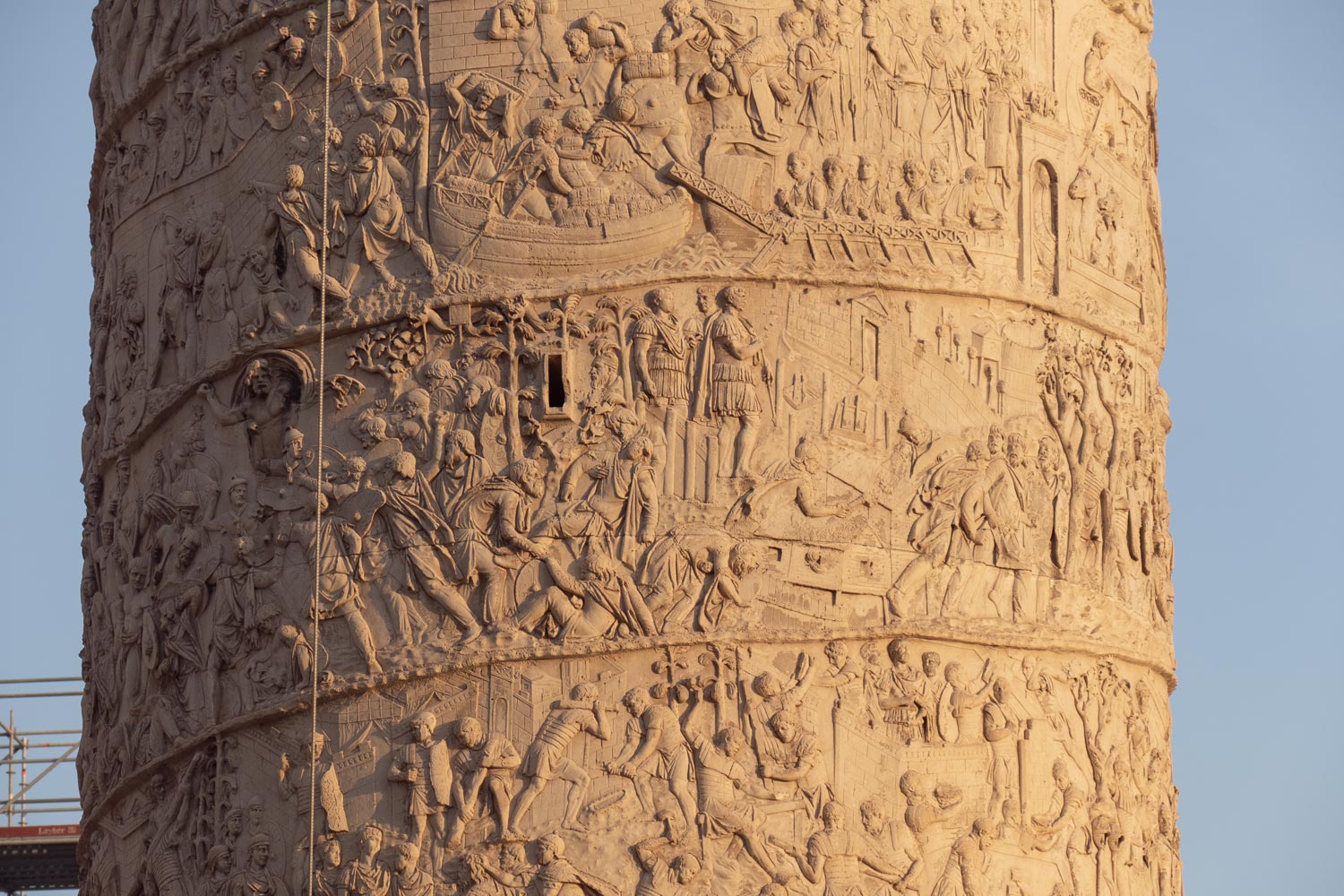
The column is hollow inside, and it has a staircase leading to the very top. But the most interesting part of the column is actually at the bottom. At its base is inscribed an ancient Roman text.

The content of the inscription is not interesting; it’s just a gratitude from the Roman people to their dear national leader. But the font in which it’s written has entered history even deeper than the emperor himself!
This font, aptly named Trajan, is one of the most popular in the world. Thousands of signs, plaques, book headings, and posters are written in it. It can be found everywhere: from souvenir stalls to the cover of the Bible.

Take movies, for example. Posters for films like “The Lord of the Rings,” “The Gunpowder Plot,” “Titanic,” and “Game of Thrones” are written in that very font taken from Emperor Trajan’s column! Try not to think about the Roman Empire now.

All street signs in Rome are also written in this font.
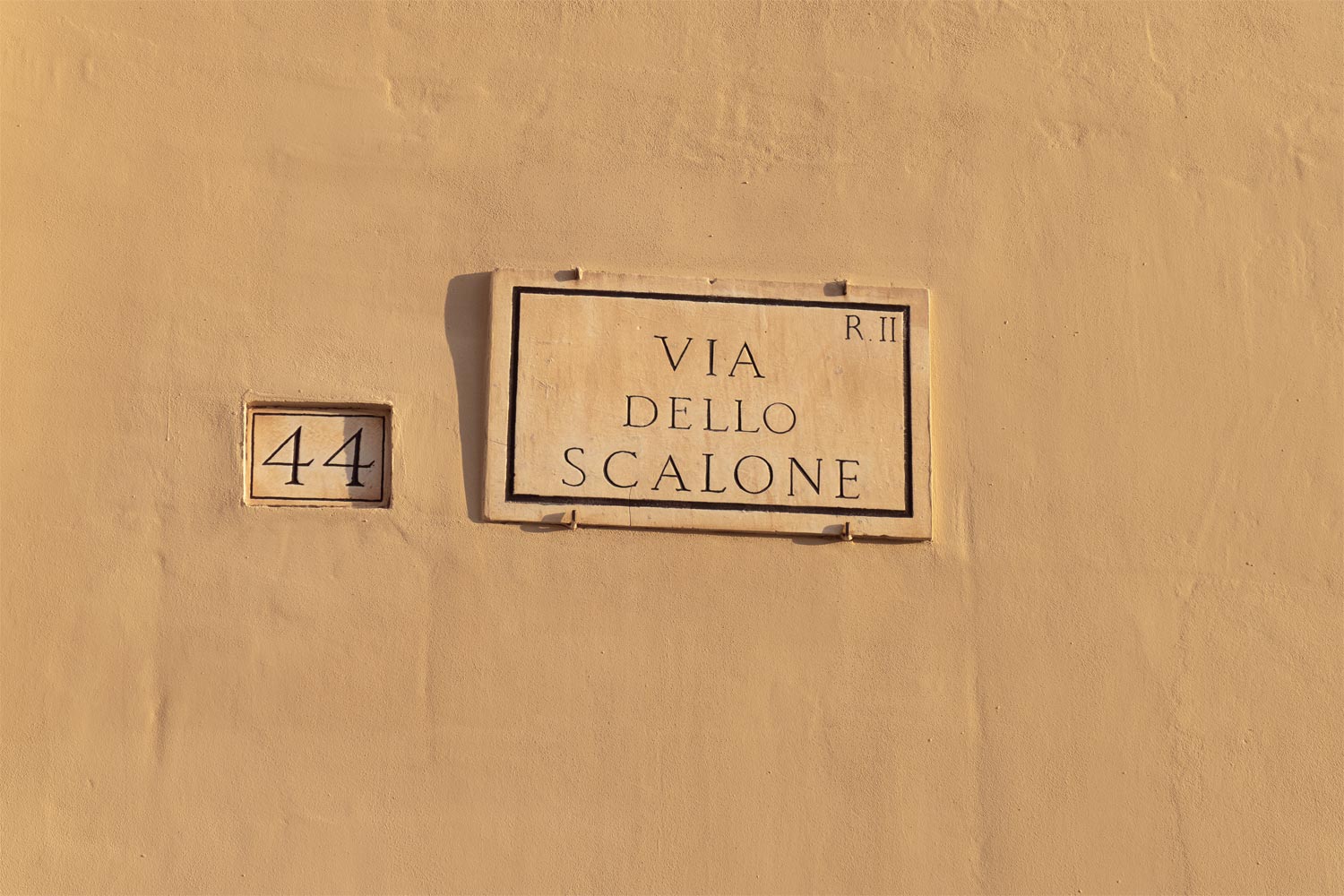
The inscription on the column, although not particularly interesting, starts with the motto of Ancient Rome that everyone should know: SENATVS · POPVLVS · QVE · ROMANVS. This phrase translates to “The Senate and People of Rome” and is abbreviated as S.P.Q.R.
Previously, it was written on military flags, and now it’s another brand of Rome. In addition to a dozen arches, monuments, and obelisks, these letters can be found on absolutely any city object — even on a manhole lid.
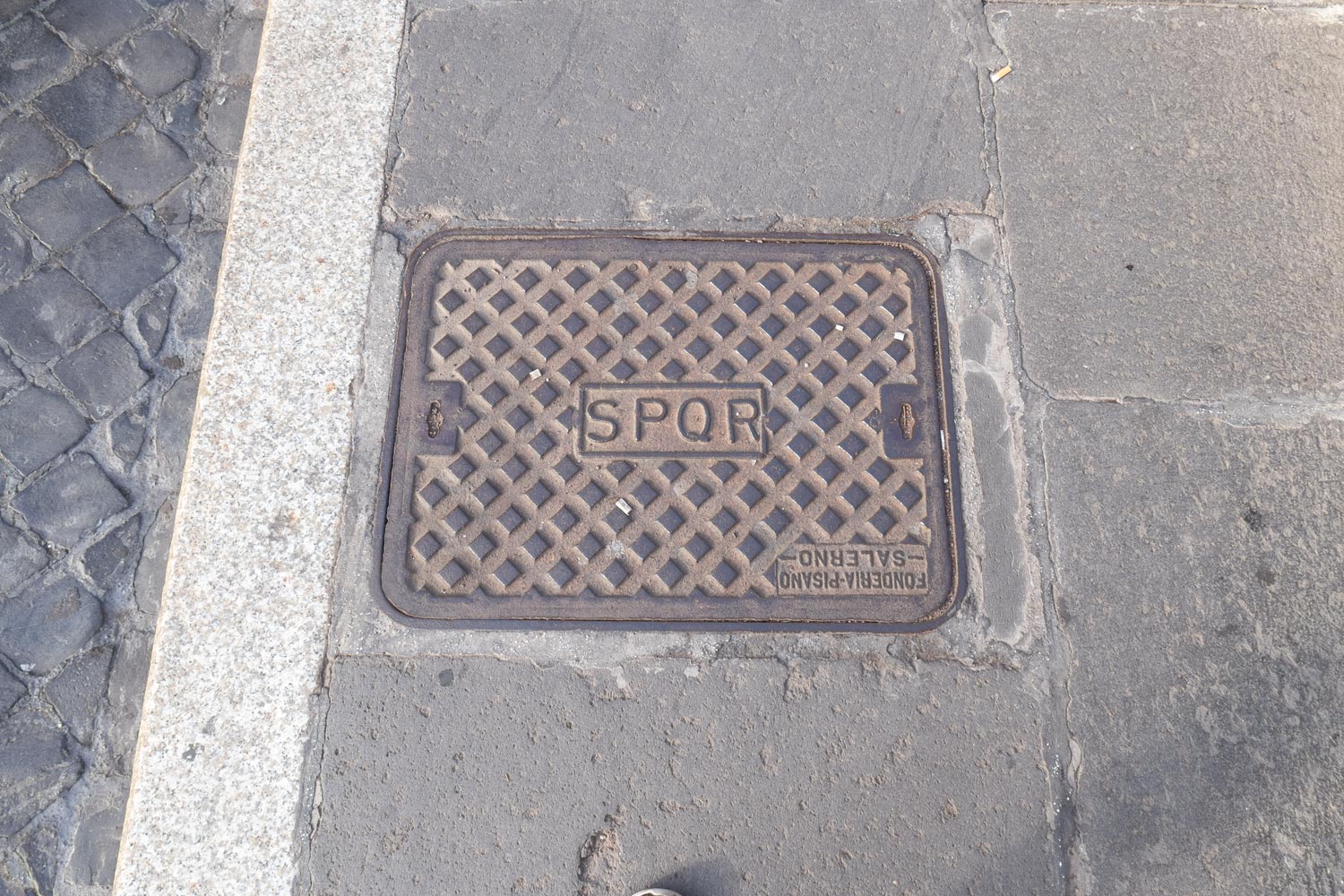
It’s amazing that right next to Trajan’s Column stands the most dreadful building of Rome — the Vittoriano Palace. This monstrosity was erected in 1911 directly on the Capitoline Hill in honor of the then King of Italy.
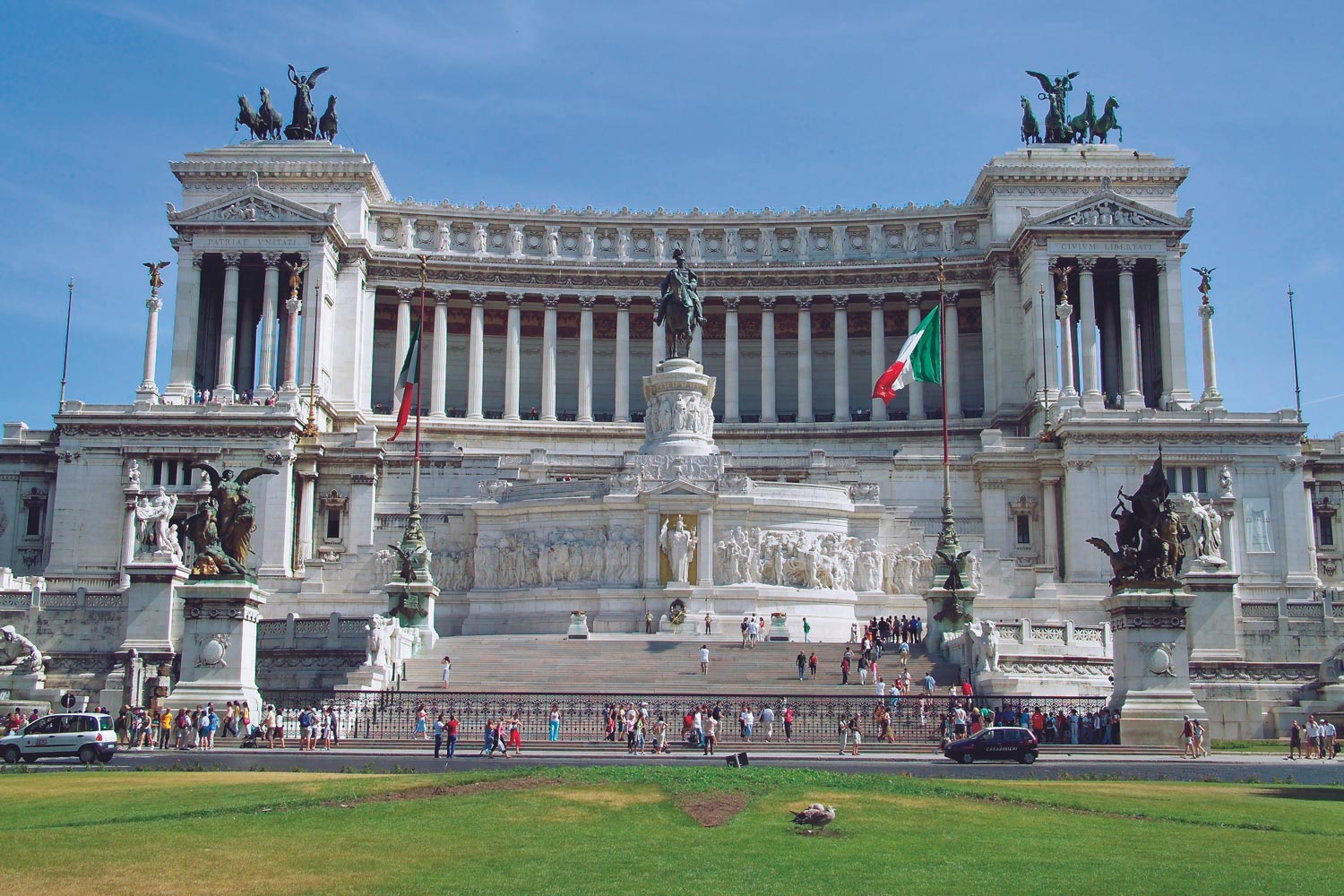
No, really. In any other city, this palace would look magnificent, but by Rome’s standards, it’s just like some Khrushchev-era architecture. Let’s move on from here.
Tiber River
A typical street in Rome along the Tiber River is overgrown with trees on the sidewalk.
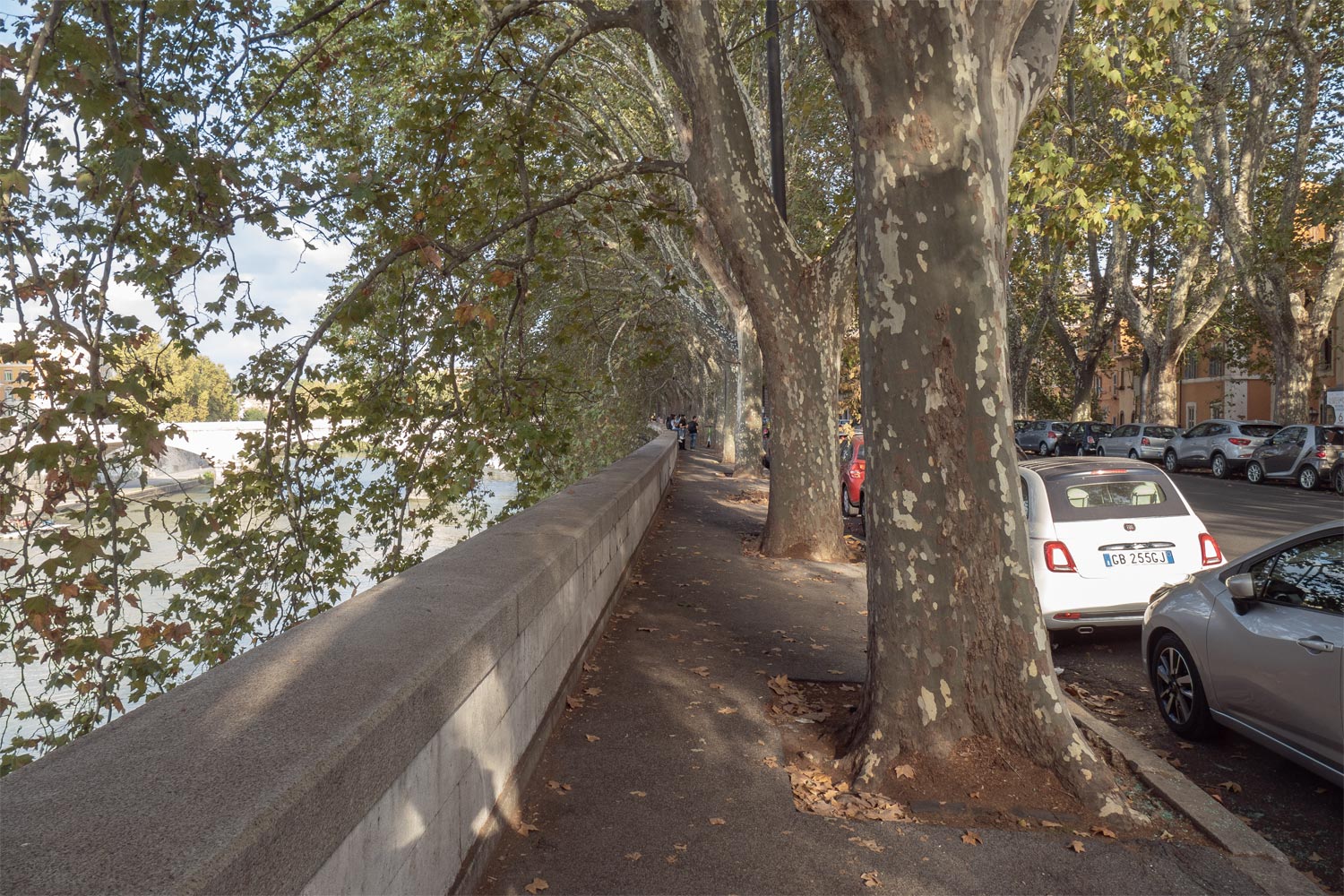
The water in the Tiber is a toxic yellow-green color, and there is no proper waterfront because the river overflows.
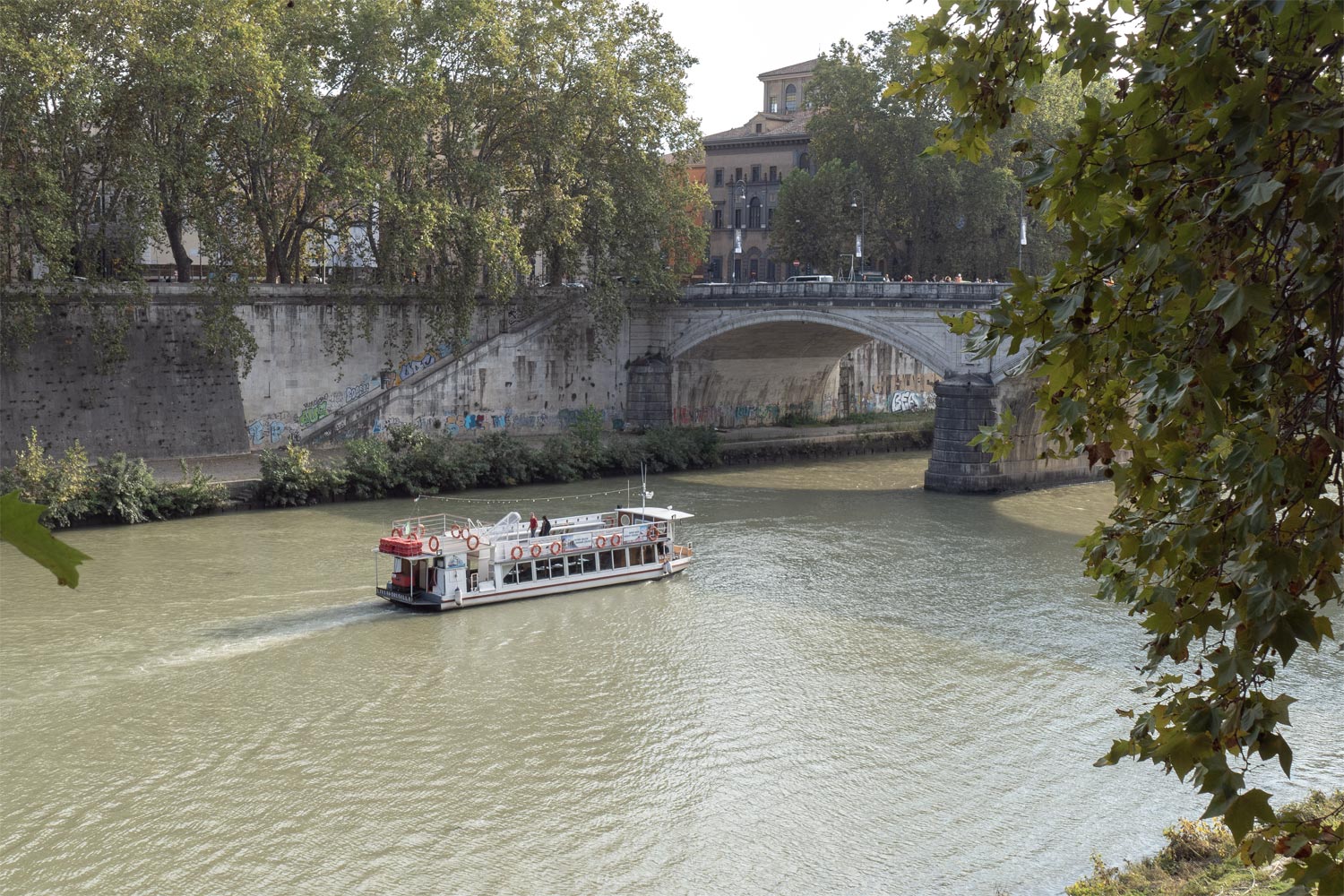
Somewhere in the middle of the city, the Tiber makes a sharp turn, and here stands a huge round stone-colored building. It is called the Castel Sant’Angelo.

Of course, it’s not a castle at all. It’s a mausoleum built by Emperor Hadrian. Yes, indeed, it turns out there was a mausoleum in the center of Rome, the size of which communists would envy.
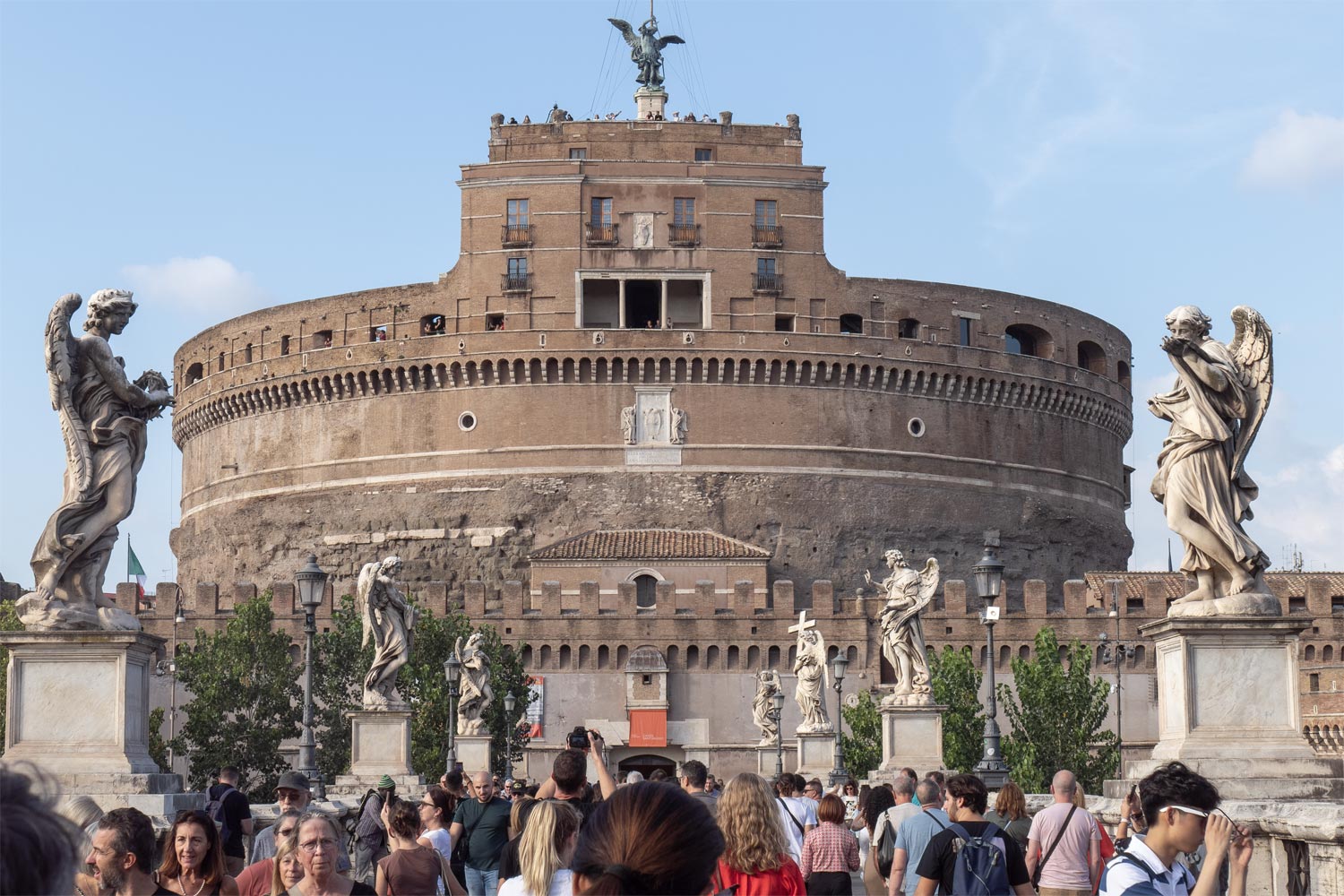
Actually, Emperor Hadrian was the first to be buried here. Later, other emperors were also buried in the “castle,” and when Rome ran out of emperors to bury, the mausoleum was transformed into a fortress for protection against barbarian raids.
Later on, it was taken over by Roman popes, who turned it into their official dacha. They also set up a prison nearby where they threw all munafiqs.
One of the prisoners there was Giordano Bruno — an Italian astronomer who denied church dogmas and decided to tell people that the Universe is infinite, and the Sun is just a star.
Burned alive in 1600.

